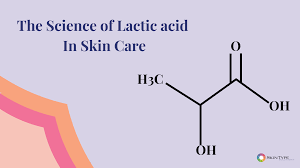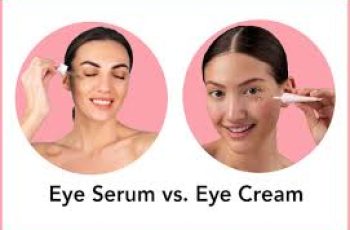
The Science of Lactic Acid in Skin Care
Have you ever wondered why lactic acid has been a popular skin care ingredient for thousands of years? Derived from natural sources like milk, fermented fruits, or yogurt, this hydroxyacid offers many advantages to dry, resistant skin types.
In this comprehensive guide, we’ll delve into what lactic acid is, where it comes from, its numerous benefits, potential side-effects, and its various applications in skincare. But before we dive into the details, let’s start with the basics.
Find out your Baumann Skin Type to ensure you only buy the right products for your skin!
The best lactic acid products
If you know this ingredient is right for your Baumann Skin Type and just want our recommendations for the best products, you can find them right here!
What is lactic acid?
Lactic acid in skin care is a hydroxyacid that can play a beneficial role in many daily routines. (3) Lactic acid is an alpha hydroxy acid (AHA) derived from natural sources like milk. AHAs like this one and glycolic acid are renowned for their exfoliating and hydrating properties, making them one of the most common categories of ingredients in skin care products. (2)
Where does lactic acid come from?
The lactic acid used in skin care products does not come from the human body even though we produce lactic acid. For skin care products, lactic acid can be sourced from various places, but one of the most common sources is milk. The extraction process involves fermenting milk sugars (lactose) using bacteria, resulting in a chemical reaction that produces lactic acid. (6) This natural production method ensures that the lactic acid used in skincare is safe and effective. The lactic acid produced by these reactions is used alongside other ingredients to serve particular functions in a variety of product types such as moisturizers, cleansers, sunscreens, balms, and more.
Common sources of lactic acid in skin care include:
Fermented Fruits
Milk
Mushrooms
Sugarcane
Yogurt
Benefits of lactic acid in skin care
Lactic acid is a versatile and multifaceted ingredient in skin care products. Some of the most notable benefits attributed to this compound in skin care are:
Humectant properties – Lactic acid, like other humectants (such as glycerin, hyaluronic acid, and panthenol) attract moisture to themselves, leaving the skin feeling more hydrated. Lactic acid does not dry your skin. (7,8) It is in a group of compounds known as “Natural Moisturizing Factors” (NMF)
Exfoliation – Hydroxyacids like lactic acid have a low pH, meaning they are acidic and can aid in the removing of dead skin cells. (9) Your skin is always naturally experiencing desquamation, and this ingredient can supplement that process. (1) Exfoliating is beneficial for anti-aging, dark spot treatments (13), and collagen synthesis.
Acne Care – Another benefit attributed to low pH is antimicrobial properties. (10) Ingredients like lactic acid are able to eliminate acne causing bacteria on the skin. The exfoliating properties of lactic acid also help keep pores clear of dead skin. This ingredient is found in many cleansers because it is good at removing debris like dirt and pollution from the skin.(11)
All of these benefits make lactic acid a great contender for acne prone, dry, or aging skin types who can tolerate a low pH ingredient.
It is also worth noting that studies have found lactic acid to be a good treatment for psoriasis (5) and xerosis.
To see if lactic acid fits in your skin care routine, take our quiz by clicking the button just below!
What Skin Conditions does Lactic Acid Treat?
Lactic acid is used to treat many skin conditions. These are the most common:
Acne
Bumps on Skin
Dull Skin
Hyperpigmentation
Melasma
Keratosis pilaris
Rough Skin
Sun spots
Xerosis
Wrinkles
Side-effects of lactic acid in skin care
Lactic acid has been extensively reviewed for use in skin care and is very safe to use. (3) Research organizations like the CIR and the EWG have published reports on the safety of lactic acid used in skin care. The EWG is adamant that the specific use of lactic acid determines it safety, grading it “1-5.” When used in concentrations of 10% or less, there is only a chance of irritating sensitive skin. (12)
Lactic acid is nonetheless one of the least irritating hydroxyacids on the skin, but that doesn’t mean it’s right for everybody.
There are really only two main considerations to keep in mind when choosing a lactic acid product:
It has an odor – this might not bother everybody, and the smell can be covered or washed off, but lactic acid products often do have a fragrance worth mentioning.
Extremely sensitive skin types might still experience irritation or stinging – some people simply cannot tolerate low pH products or ingredients on their skin.
It is a alpha hydroxy acid (AHA) and therefore slightly thins the stratum corneum layer of skin which reduces the skin’s natural SPF slightly. So always use a SPF in the daytime if AHAs are in your skincare routine.
Uses of lactic acid in skin care
Lactic acid has been used for centuries by some of history’s greatest beauty icons. Cleopatra, known for her legendary aesthetics, reportedly bathed in sour milk, which contains ample lactic acid. (4) This practice contributed to her famously soft and radiant skin. Similarly, the character Scarlett O’Hara from “Gone with the Wind” used buttermilk on her shoulders to address hyperpigmented dark spots. (5)
If you are looking for an ingredient with endless historical precedent for your routine, lactic acid might be right for you.
Lactic acid for acne
Lactic acid’s antimicrobial properties make it a valuable tool in the fight against acne. By killing acne-causing bacteria and exfoliating the skin’s surface, it can help reduce breakouts. However, individuals with sensitive skin should be cautious, as lactic acid may cause some stinging. (14)
Lactic acid for anti-aging
Exfoliation is one of the keys to anti-aging, and lactic acid excels in this regard. By removing dead skin cells and promoting collagen production, it helps reduce the appearance of fine lines and wrinkles. (1,9) Additionally, lactic acid can address photodamage, potentially slowing down the aging process. (15)
Lactic acid for dry skin
Lactic acid’s humectant properties make it an excellent choice for dry skin. It attracts and retains moisture, keeping your skin well-hydrated. (7) Comparatively, lactic acid can be gentler on the skin than glycolic acid while still delivering effective results. It’s a superb alternative to other hydrating ingredients like glycerin and hyaluronic acid.
Notably, lactic acid can be found in products for the legs such as the prescription product AmLactin.
Conclusion
Incorporating lactic acid into your skincare routine can be a game-changer. Whether you’re dealing with acne, seeking anti-aging benefits, or combating dry skin, lactic acid’s versatility has you covered. If you’re unsure where to start, consider taking the Baumann Skin Type questionnaire to discover the products best suited for your unique skin needs. Here’s to healthier, more radiant skin through the power of lactic acid!


